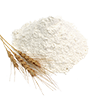Sign In Chef

By using our free meal planner (and the rest of spoonacular.com) you have to agree that you and only you are responsible for anything that happens to you because of something you have read on this site or have bought/cooked/eaten because of this site. After all, the only person who controls what you put in your mouth is you, right?
Spoonacular is a recipe search engine that sources recipes from across the web. We do our best to find recipes suitable for many diets — whether vegetarian, vegan, gluten free, dairy free, etc. — but we cannot guarantee that a recipe's ingredients are safe for your diet. Always read ingredient lists from the original source (follow the link from the "Instructions" field) in case an ingredient has been incorrectly extracted from the original source or has been labeled incorrectly in any way. Moreover, it is important that you always read the labels on every product you buy to see if the product could cause an allergic reaction or if it conflicts with your personal or religious beliefs. If you are still not sure after reading the label, contact the manufacturer.
We also attempt to estimate the cost and calculate the nutritional information for the recipes found on our site. Again, we cannot guarantee the accuracy of this information. Additionally, our nutrition visualizer that suggests that you limit sodium, sugar, etc., and get enough protein, vitamins, and minerals is not intended as medical advice. Similarly, our health tips are based on articles we have read from various sources across the web, and are not based on any medical training. The team behind spoonacular does not possess any medical qualifications and the information may be found to be incorrect or out of date based on future research. If you need help planning your diet or determining which foods (and recipes) are safe for you, contact a registered dietitian, allergist, or another medical professional.
Spoonacular is not responsible for any adverse effects or damages that occur because of your use of the website or any information it provides (e.g. after cooking/consuming a recipe on spoonacular.com or on any of the sites we link to, after reading information from articles or shared via social media, etc.)
×$6.24 per serving

1 likes

Ready in 45 minutes

Spoonacular Score: 20%
Nacho Mama's Cheese Nachos requires around 45 minutes from start to finish. For $6.24 per serving, you get a hor d'oeuvre that serves 1. One portion of this dish contains roughly 71g of protein, 137g of fat, and a total of 2323 calories. This recipe is typical of Mexican cuisine. This recipe from Foodista requires butter, salsa, cumin, and tortilla chips. 1 person has made this recipe and would make it again. Overall, this recipe earns an excellent spoonacular score of 87%. Similar recipes are Supreme Nacho Libre Nachos, Choco-Nacho from 'Ultimate Nachos, and My Mama’s Potted Cheese.
Pinot Noir, Sparkling Wine, and Riesling are my top picks for Nachos. If you're serving a selection of appetizers, you can't go wrong with these. Both are very food friendly and complement a variety of flavors. The Tobacco Road Pinot Noir, Wine with a 5 out of 5 star rating seems like a good match. It costs about 30 dollars per bottle.
 Aromas of cherry pie, pomegranate, and lychee fruit are followed by vibrant flavors of strawberry jam with hints of whipped cream, clove and cinnamon spice. This is a pretty wine with bright acid and a food-friendly structure.
Aromas of cherry pie, pomegranate, and lychee fruit are followed by vibrant flavors of strawberry jam with hints of whipped cream, clove and cinnamon spice. This is a pretty wine with bright acid and a food-friendly structure.
» Get this wine on Amazon.com
































Read the detailed instructions on Foodista.com – The Cooking Encyclopedia Everyone Can Edit